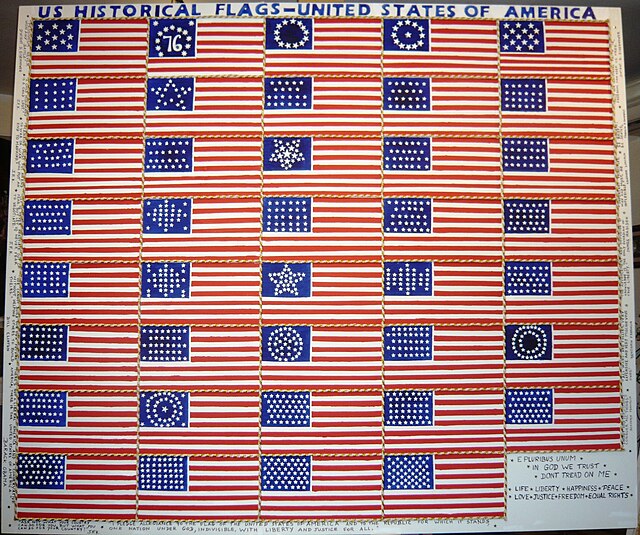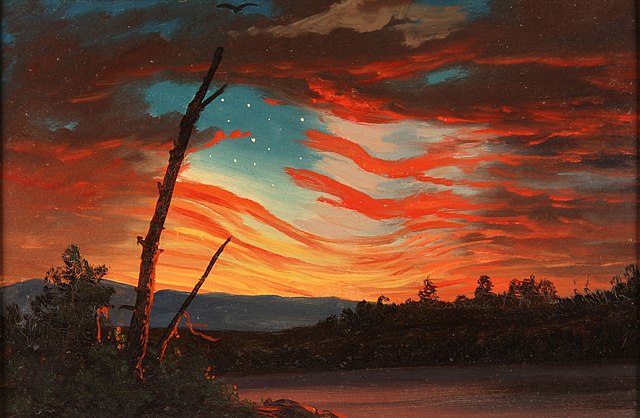Elizabeth Griscom Ross, also known by her second and third married names, Ashburn and Claypoole, was an American upholsterer who was credited by her relatives in 1870 with making the second official U.S. flag, accordingly known as the Betsy Ross flag. Though most historians dismiss the story, Ross family tradition holds that General George Washington, commander-in-chief of the Continental Army and two members of a congressional committee—Robert Morris and George Ross—visited Mrs. Ross in 1776. Mrs. Ross convinced George Washington to change the shape of the stars in a sketch of a flag he showed her from six-pointed to five-pointed by demonstrating that it was easier and speedier to cut the latter. However, there is no archival evidence or other recorded verbal tradition to substantiate this story of the first U.S. flag. It appears that the story first surfaced in the writings of her grandson in the 1870s, with no mention or documentation in earlier decades.

Painting depicting the story of Betsy Ross presenting the first U.S. flag to General George Washington, by Edward Percy Moran, c. 1917
Pennsylvania Navy Ensign
Certificate of the American Flag House and Betsy Ross Memorial Association, issued 1912; at left and right vignettes of the Betsy Ross House and with the then current grave site of Betsy Ross.
The Daughters of the American Revolution erected a flagpole to commemorate the burial site of Betsy Ross in Mount Moriah Cemetery
Flag of the United States
The national flag of the United States, often referred to as the American flag or the U.S. flag, consists of thirteen equal horizontal stripes of red alternating with white, with a blue rectangle in the canton, referred to as the union and bearing fifty small, white, five-pointed stars arranged in nine offset horizontal rows, where rows of six stars alternate with rows of five stars. The 50 stars on the flag represent the 50 U.S. states, and the 13 stripes represent the thirteen British colonies that declared independence from Great Britain, which they went on to secure by their victory in the American Revolutionary War.
Oil painting depicting the 39 historical U.S. flags.
Our Banner in the Sky (1861) by Frederic Edwin Church
An American flag on the U.S. embassy in Warsaw during a German air raid in September 1939
The NASA Vehicle Assembly Building in 1977. The VAB has the largest U.S. flag ever used on a building, with the Bicentennial Star opposite the flag.








